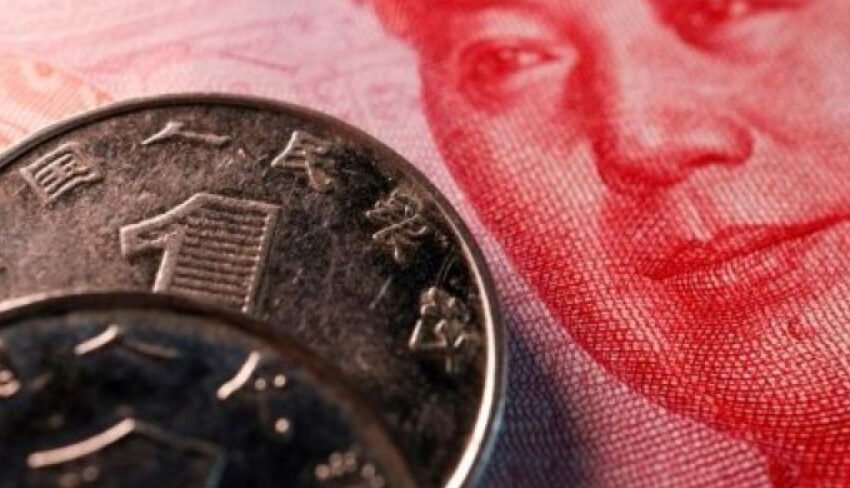SYRUP, MOVE, DEXE among top gainers as cryptocurrencies eye fresh
China’s FX Regulator Backs CBDC for Enhanced Monetary Policy
(Originally posted on : Crypto News – iGaming.org )
The State Administration of Foreign Exchange’s (SAFE) Deputy Administrator, Lu Lei, has discussed the revolutionary potential of Central Bank Digital Currencies (CBDCs). In his remarks to the CNA agency, he emphasized how CBDCs may increase the efficiency of monetary policy instruments, opening the door for a new era in the financial industry.
Empowering Monetary Policy with CBDCs
Lu Lei emphasized the programmable nature of CBDCs as a game-changer for central banks. By incorporating CBDCs into the M2 currency category, which includes deposits and savings, central banks can harness the versatile features of this digital currency. This integration has the power to optimize monetary policy tools, ensuring their efficacy in the modern financial landscape.
New players only. Exclusive Welcome Bonus of up to $2,500
Lu Lei asserted, “Payments facilitated by CBDCs can not only be more secure but also more convenient and inclusive, benefitting a broader spectrum of users.”
The development of the digital yuan, China’s official digital currency, has emerged as a focal point of the country’s financial strategy. Under the leadership of the People’s Bank of China (PBoC), China has made substantial progress in its CBDC initiative, known as the Digital Currency Electronic Payment (DCEP) program.
At its core, the digital yuan aims to gradually replace physical banknotes and coins, ushering in an era of reduced reliance on cash and an increased emphasis on digital payments. This vision aligns with China’s pursuit of diversifying the payment landscape, a landscape largely dominated by private-sector electronic payment platforms like Alipay and WeChat Pay.
New players only. Exclusive Welcome Bonus of up to $2,500
China has been proactive in the implementation and testing of the digital yuan. Notable initiatives include trials and pilot programs that assess the functionality and acceptance of this digital currency. In a remarkable move, the PBoC distributed 100,000 digital ‘red packets’ to citizens in Shenzhen via a lottery in January 2021. Each packet contained 200 yuan, providing individuals with a firsthand experience of using the digital currency.
The Chinese government has also launched various initiatives in different regions to encourage wider adoption of the digital yuan, further cementing its position as a pioneer in the world of CBDCs.
In conclusion, the insights provided by Lu Lei reflect the transformative potential of CBDCs in revolutionizing the monetary policy landscape. As China continues to lead the way with its digital yuan, the global financial community watches closely, anticipating the ripple effect this innovation may have on the future of finance.







 Bitcoin
Bitcoin  Ethereum
Ethereum  Tether
Tether  XRP
XRP  Solana
Solana  USDC
USDC  TRON
TRON  Dogecoin
Dogecoin  Lido Staked Ether
Lido Staked Ether  Cardano
Cardano  Wrapped Bitcoin
Wrapped Bitcoin  Hyperliquid
Hyperliquid  Wrapped stETH
Wrapped stETH  Bitcoin Cash
Bitcoin Cash  Sui
Sui  Chainlink
Chainlink  LEO Token
LEO Token  Stellar
Stellar  Avalanche
Avalanche  USDS
USDS  Toncoin
Toncoin  WhiteBIT Coin
WhiteBIT Coin  Shiba Inu
Shiba Inu  Hedera
Hedera  Litecoin
Litecoin  WETH
WETH  Wrapped eETH
Wrapped eETH  Binance Bridged USDT (BNB Smart Chain)
Binance Bridged USDT (BNB Smart Chain)  Monero
Monero  Ethena USDe
Ethena USDe  Polkadot
Polkadot  Bitget Token
Bitget Token  Coinbase Wrapped BTC
Coinbase Wrapped BTC  Pi Network
Pi Network  Uniswap
Uniswap  Pepe
Pepe  Aave
Aave  Dai
Dai  Ethena Staked USDe
Ethena Staked USDe  Aptos
Aptos  OKB
OKB  Bittensor
Bittensor  BlackRock USD Institutional Digital Liquidity Fund
BlackRock USD Institutional Digital Liquidity Fund  NEAR Protocol
NEAR Protocol  Jito Staked SOL
Jito Staked SOL  Internet Computer
Internet Computer  Cronos
Cronos  sUSDS
sUSDS  Ethereum Classic
Ethereum Classic  Ondo
Ondo  Tokenize Xchange
Tokenize Xchange  USD1
USD1  Mantle
Mantle  Gate
Gate  Cosmos Hub
Cosmos Hub  VeChain
VeChain  Official Trump
Official Trump  Artificial Superintelligence Alliance
Artificial Superintelligence Alliance  Lombard Staked BTC
Lombard Staked BTC  Sky
Sky  Sei
Sei  Render
Render  POL (ex-MATIC)
POL (ex-MATIC)  Ethena
Ethena  Algorand
Algorand  Arbitrum
Arbitrum  Filecoin
Filecoin  Worldcoin
Worldcoin  Jupiter Perpetuals Liquidity Provider Token
Jupiter Perpetuals Liquidity Provider Token  Binance-Peg WETH
Binance-Peg WETH  Quant
Quant  USDtb
USDtb  KuCoin
KuCoin  Binance Staked SOL
Binance Staked SOL  USDT0
USDT0  SPX6900
SPX6900  Jupiter
Jupiter  NEXO
NEXO  Kaia
Kaia  Rocket Pool ETH
Rocket Pool ETH  Celestia
Celestia  Injective
Injective  Bonk
Bonk  Fartcoin
Fartcoin  Stacks
Stacks  Polygon Bridged USDT (Polygon)
Polygon Bridged USDT (Polygon)  Sonic
Sonic  Virtuals Protocol
Virtuals Protocol  Binance Bridged USDC (BNB Smart Chain)
Binance Bridged USDC (BNB Smart Chain)  Optimism
Optimism  PayPal USD
PayPal USD  Solv Protocol BTC
Solv Protocol BTC  Mantle Staked Ether
Mantle Staked Ether